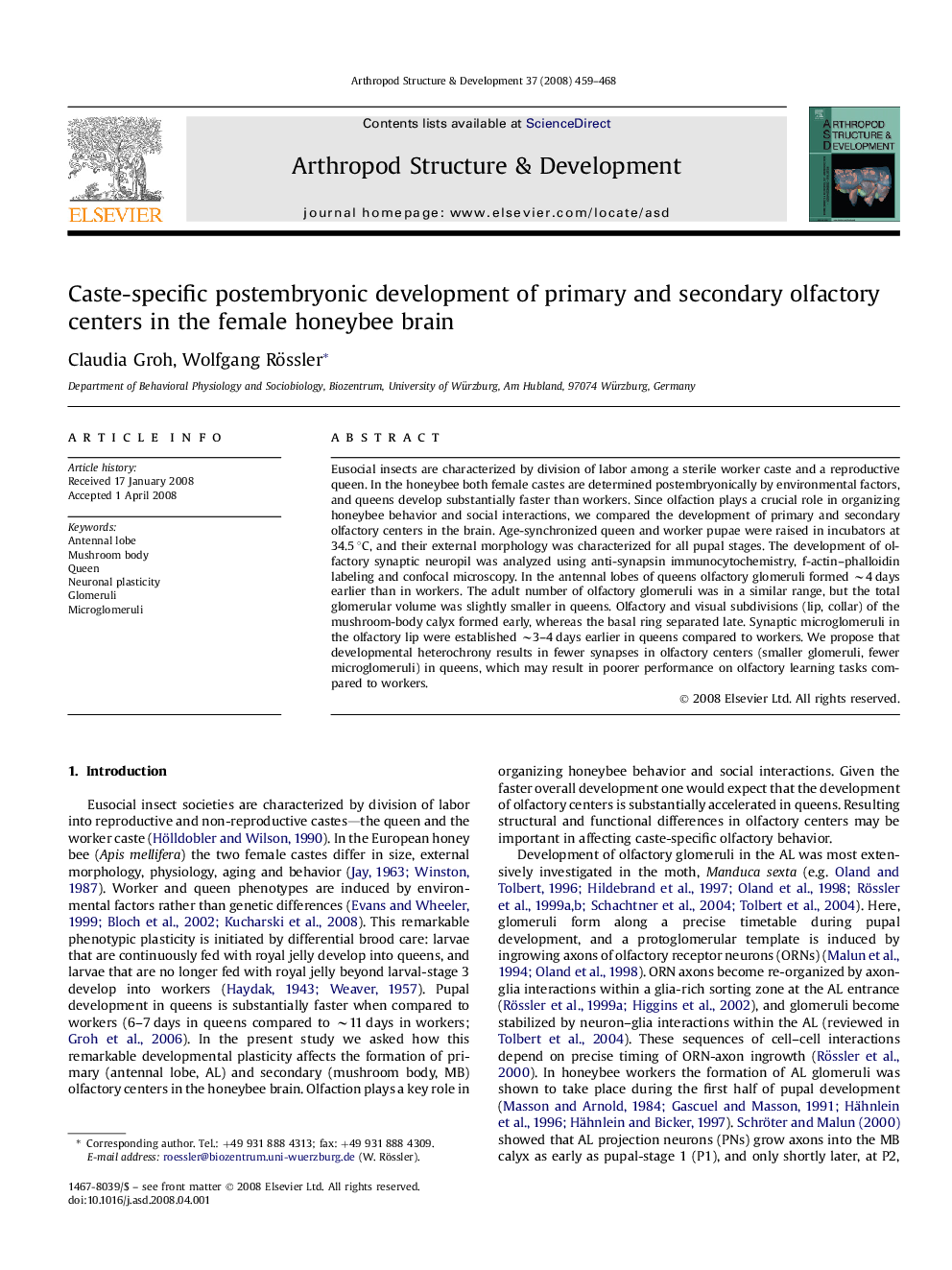| کد مقاله | کد نشریه | سال انتشار | مقاله انگلیسی | نسخه تمام متن |
|---|---|---|---|---|
| 2778880 | 1153176 | 2008 | 10 صفحه PDF | دانلود رایگان |

Eusocial insects are characterized by division of labor among a sterile worker caste and a reproductive queen. In the honeybee both female castes are determined postembryonically by environmental factors, and queens develop substantially faster than workers. Since olfaction plays a crucial role in organizing honeybee behavior and social interactions, we compared the development of primary and secondary olfactory centers in the brain. Age-synchronized queen and worker pupae were raised in incubators at 34.5 °C, and their external morphology was characterized for all pupal stages. The development of olfactory synaptic neuropil was analyzed using anti-synapsin immunocytochemistry, f-actin–phalloidin labeling and confocal microscopy. In the antennal lobes of queens olfactory glomeruli formed ∼4 days earlier than in workers. The adult number of olfactory glomeruli was in a similar range, but the total glomerular volume was slightly smaller in queens. Olfactory and visual subdivisions (lip, collar) of the mushroom-body calyx formed early, whereas the basal ring separated late. Synaptic microglomeruli in the olfactory lip were established ∼3–4 days earlier in queens compared to workers. We propose that developmental heterochrony results in fewer synapses in olfactory centers (smaller glomeruli, fewer microglomeruli) in queens, which may result in poorer performance on olfactory learning tasks compared to workers.
Journal: Arthropod Structure & Development - Volume 37, Issue 6, November 2008, Pages 459–468